The Saul Leiter Way
Hello, and good day to everyone reading this! I hope you’re doing well. It’s my second time writing here, and it is still a massive amount of joy. I’ve been thinking about writing again for quite a long time, but never managed to find an interesting subject, or the motivation to actually sit at a desk and write. Good news: now I have! I am again, thankful to Maurício and Hugo for giving me this opportunity, to write about my own personal dive into Saul Leiter’s work.
First, a disclaimer: I never intended to copy his work, I just wanted to walk in the footsteps of someone who has been an inspiration to me, and who actually worked and created in a very different way. I’ll explain later.
Second, and this might be more of a shame, I didn’t really dive into the character so I don’t know that much of him. I really dived into the art. However, from what I read, and a few quotes I learnt from him, I don’t think he’d mind. “I spent a great deal of my life being ignored. I was always very happy that way”.


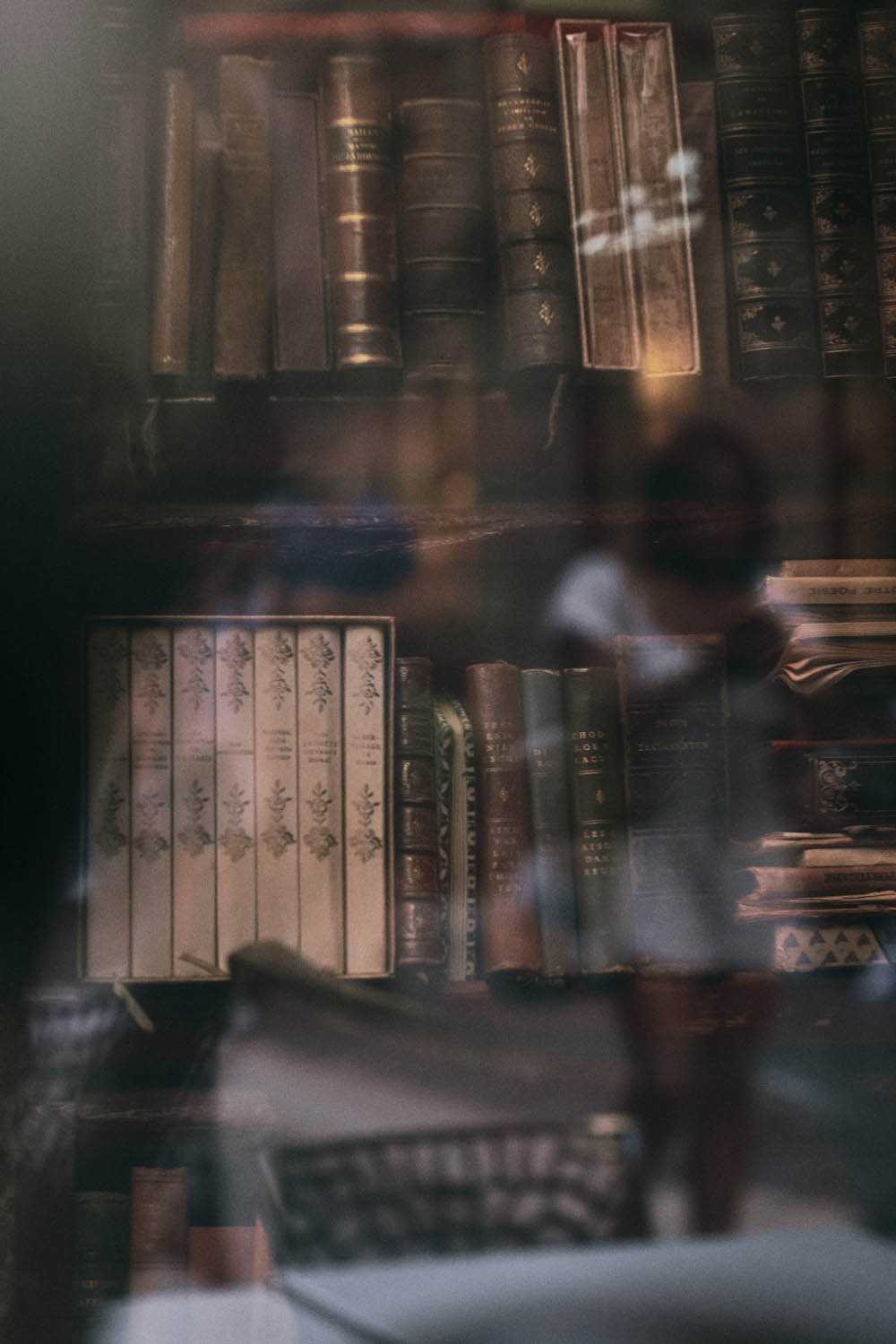
RIGHT: Fuji X-T2 . Canon FD 50mmF1.4 . 1/125″ . ISO 800

Also note that while working on his art, this should only be seen as my own and personal interpretation of his work. Some people might think differently, and that is more than ok.
A little bit of background first. I live in Lyon, France, and I’ve been a street photographer for the last 5 years now. I shot street photography in different parts of France, and I’ve been either in a crowded city, or a small countryside village. I have been a Fujifilm user since 2020, and I wrote an article here about Film simulations… that I don’t use at all anymore. I might share a bit of the joy I have to shoot on Fujifilm, and how it helped me with this exploration of Saul Leiter’s work. Yes, there will be gear talk as well. Always.
Developing my own personal style and likes, I ended up on the wider side of the focal length: my three favorite lenses are the 18mm F2, the 23mm F1.4 and now the recent Voigtlander 27mm F2. That’s the tightest I use, even though I own longer lenses like the 35mm and 56mm. I tend to use them more for portraits, or documentary, than I do for street.
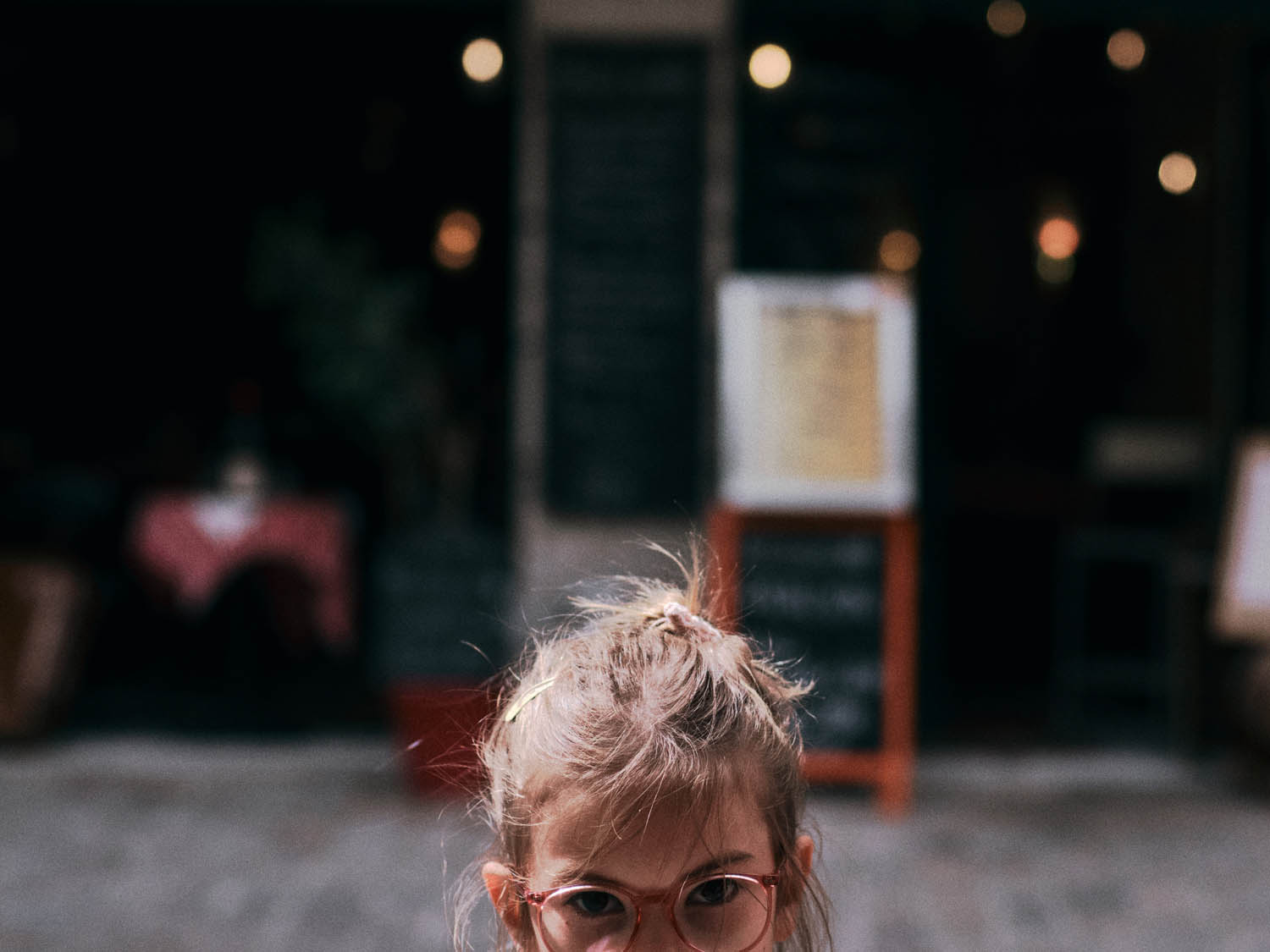
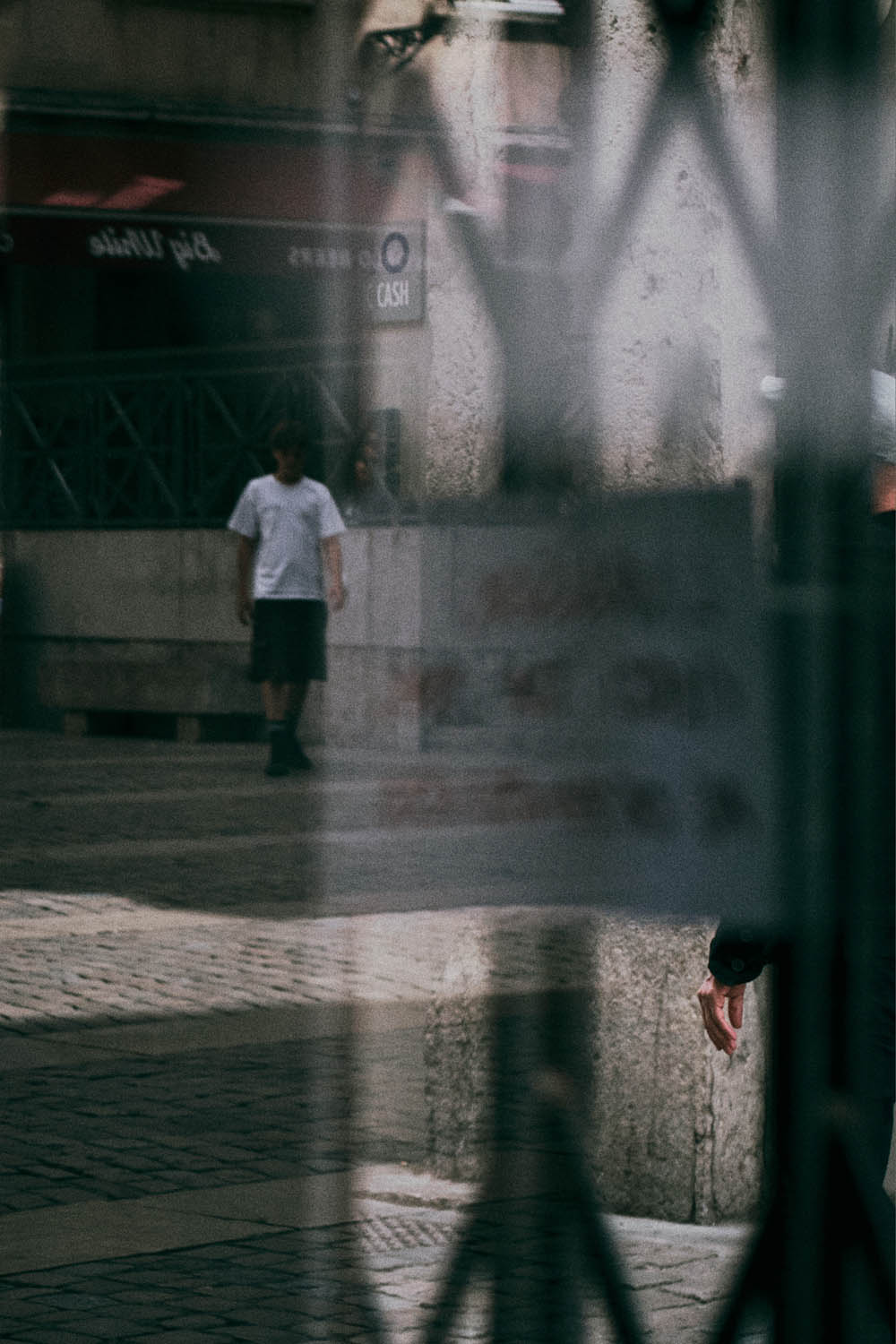
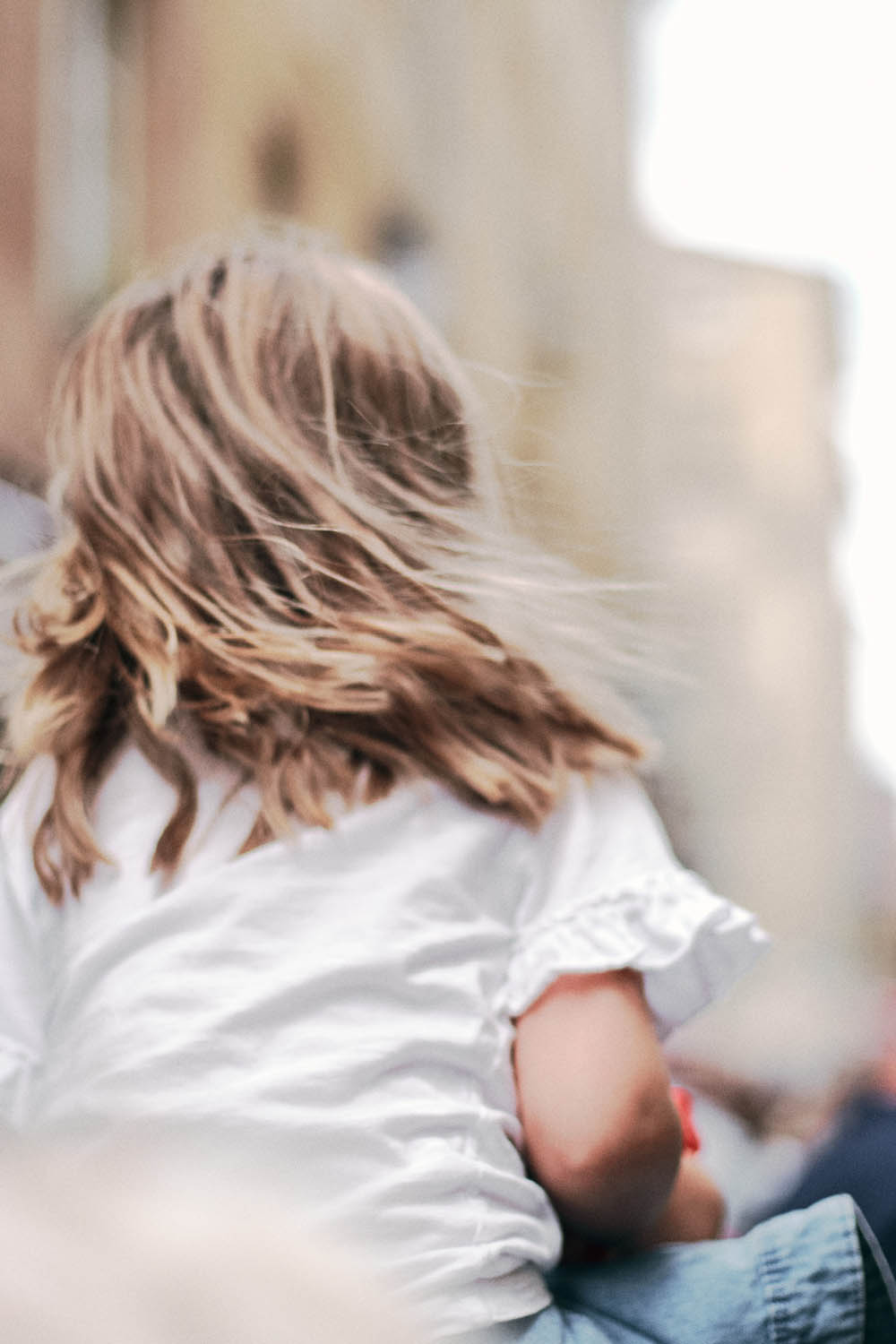
RIGHT: Fuji X-T2 . Canon FD 50mmF1.4 . 1/5000″ . ISO 800

In April or so, I went out shooting with the 56mm and the Helios 44M, which is a 58mm. It was a first time for me, using those long focal lengths… and trust me, it was a pain. I was completely lost, didn’t know what to shoot, didn’t know what to aim at, and even with a few sessions, I couldn’t come up with a picture I’d like. I shared those thoughts with friends, and someone told me “you should use layers, think about Saul Leiter”. I knew the name, knew the “Taxi” picture, and that was all.
It turned out that there was a new challenge building inside me, which would be trying to shoot in the streets with longer focal lengths. I always liked the difficulty, and trying something new, and that was it. I wanted to dive into Saul Leiter’s work, and try to understand it. It seemed to me, after looking at most of his pictures, that it was definitely different from what I used to shoot.

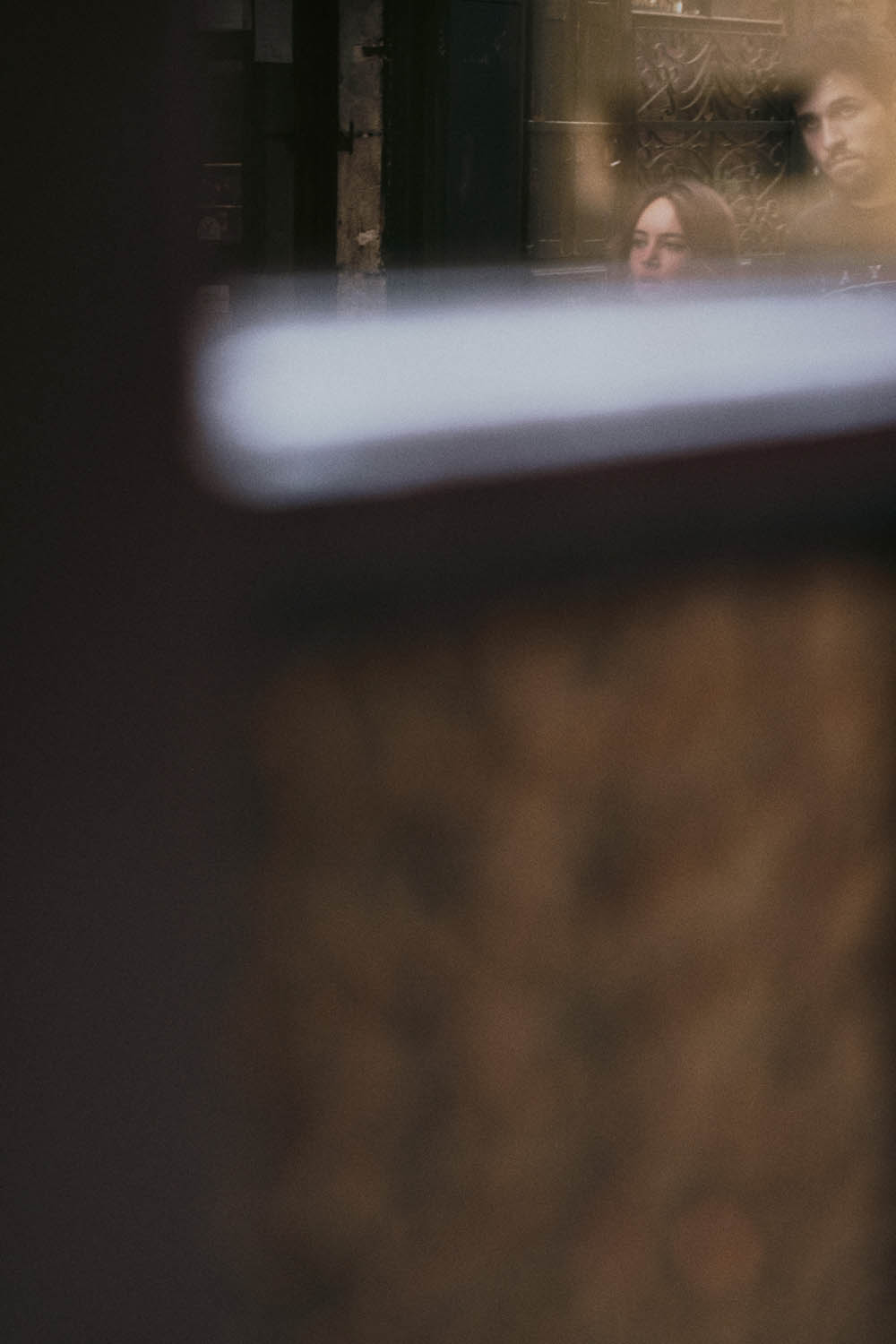

RIGHT: Fuji X-T2 . Canon FD 50mmF1.4 . 1/80″ . ISO 800
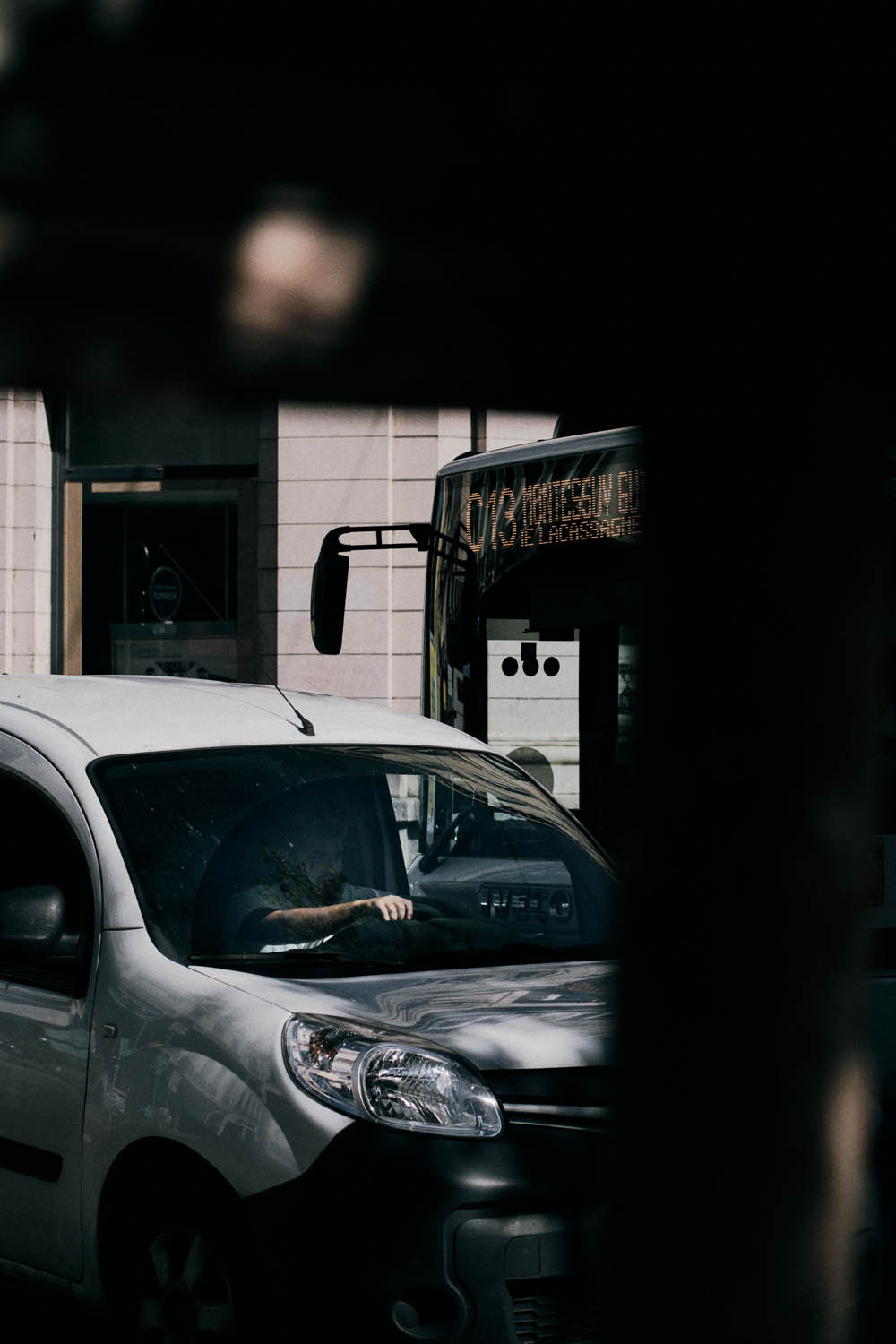

RIGHT: Fuji X-T2 . Canon FD 50mmF1.4 . 1/125″ . ISO 400
The first part was to read about him and his work, look at many pictures, and try to understand what made his style. I ended up with these thoughts – and please note that they are thoughts, how I understood his art, not what it is. I could be very much wrong, and it would be ok: it’s my perception.
- Layers: that’s what strikes me the most, how he uses different layers, subframing, and these different techniques to “suggest the human”. I don’t really know what was Leiter’s focal length, but it occurred to me it must have been tight (100mm? 150mm?), so the compression could add smooth layers.
- “Suggest the human”: I don’t know how to put it in better words, but even if in my pictures, the human is always fully present, I had the feeling that in his work, it was more suggested: a hand, an umbrella, a silhouette, more of a presence than a real, understandable human. In many of his pictures, you don’t have the face or the full body.
- Colors: he seems to have shot Kodachrome from what I’ve read, and there’s always a good deal of yellow and red, that are very much present in his photos.
- Chaos: I don’t know how to translate that really, but it seems that his pictures always have a bit of chaos in them, but it is controlled. He says he likes “a little bit of confusion”
- Reflections: it isn’t a surprise, but he did use reflections a lot, using windows or mirrors mostly.
- Negative space: this is a huge, huge part of his composition, he used negative space a lot, some of his pictures consist mostly of a big space of nothing, and a light human presence, somewhere in the frame.
To me, this translated as that :
- Using my Canon FD 50mm F1.4, on the X-T2. I have the feeling that the X-T2 is a bit better for longer focal lengths, as the grip is a bit easier than on the X-Pro2. But it’s just personal preference. The Canon FD is a very good lens that I usually like to use for portraits, so it would be a first in the streets. It’s been praised already, but being able to use such vintage lenses with a simple adapter ring, and having the help of focus peaking. It also helps using manual focus when you shoot through windows, to avoid “focus hunt” with autofocus. I basically use the focus peaking in high-red – note that if you shoot with the Acros simulation on, you’ll see the focus peaking more easily – and can still switch to Classic Chrome in post.
I’d shoot everything in manual, and again, this is where Fujifilm shines for me, with the possibility of changing settings easily even when the camera is off. It would be quite useful to change quickly when I wanted to aim at the streets, or at the windows and boost up my exposure a bit. - Changing the way I compose pictures: using layers, and more negative space. I really had to work on my eyes, and how I perceive the scenes before me.
- In the post-processing, go for a more vintage look, more muted colors except for yellows and reds, grain, and I always started with a classic chrome look.
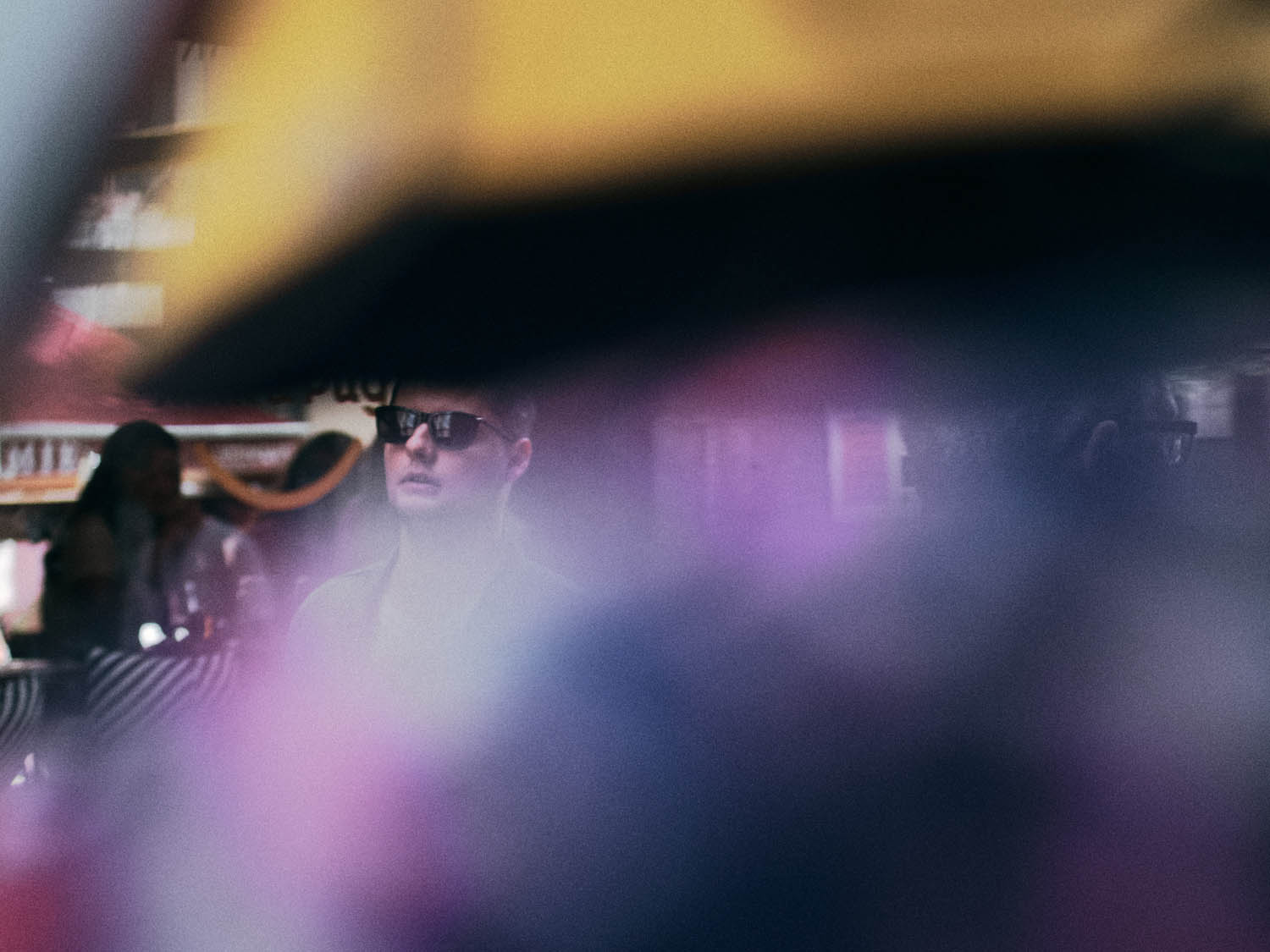
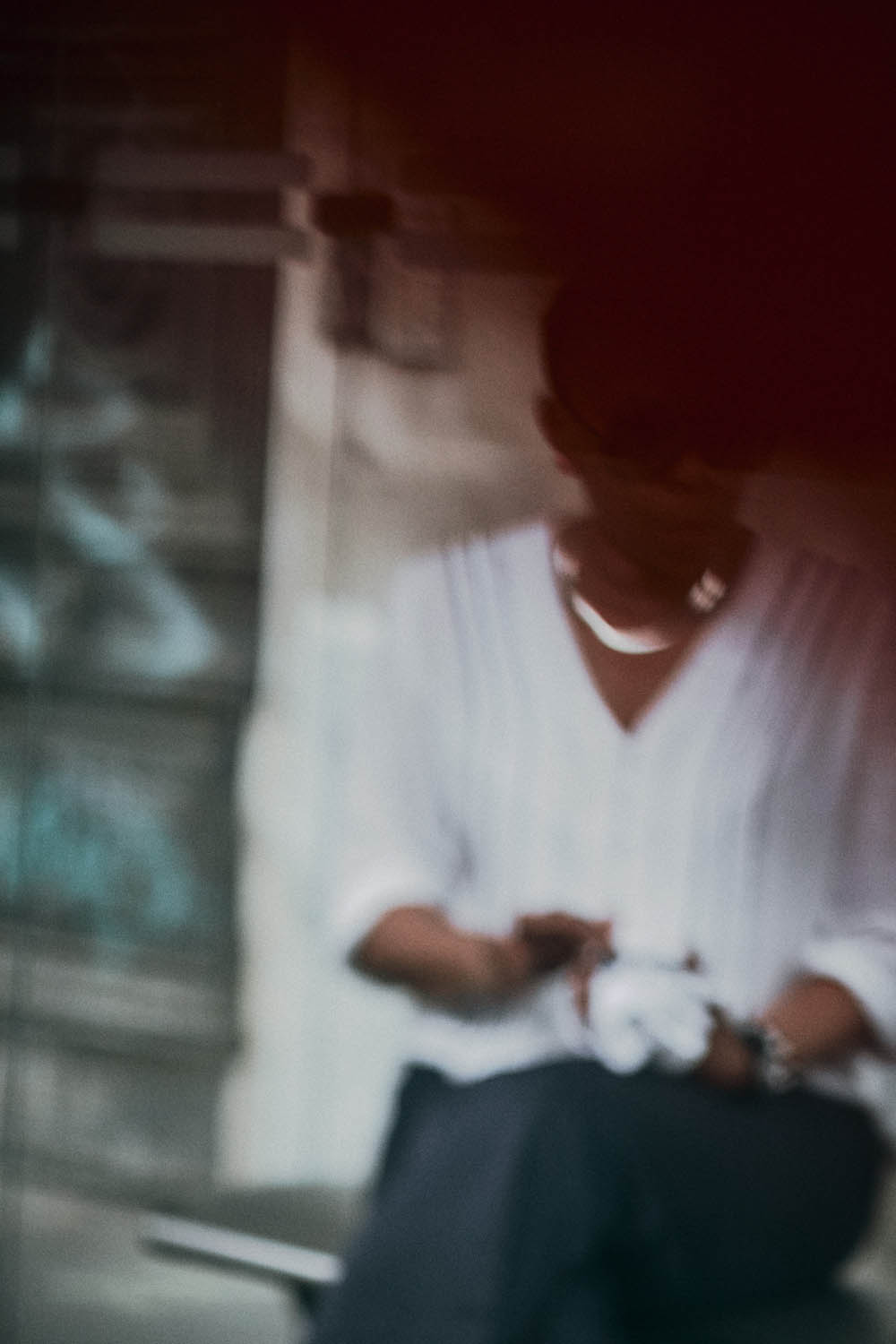
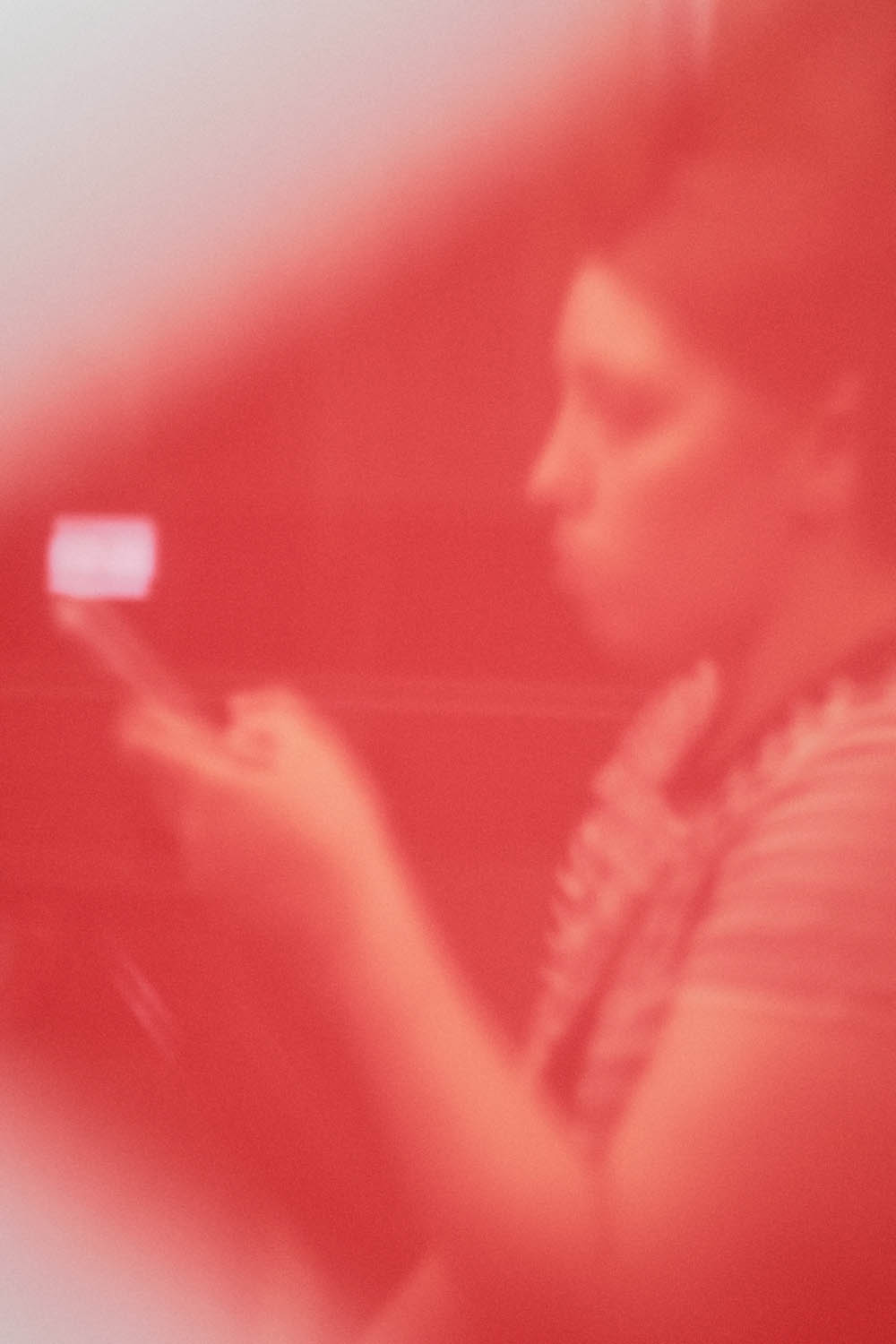
RIGHT: Fuji X-T2 . Canon FD 85mmF1.8 . 0.3″ . ISO 800
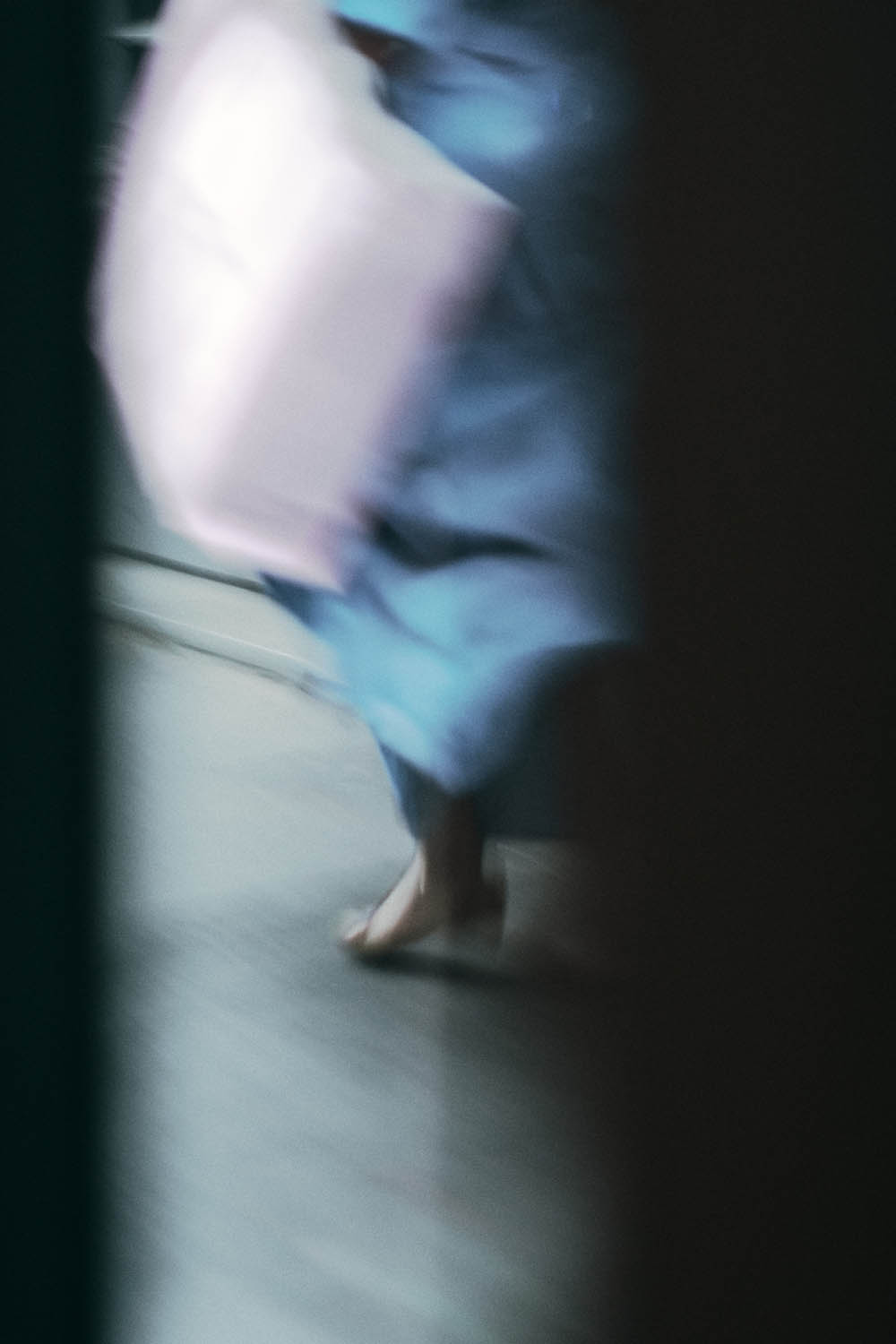
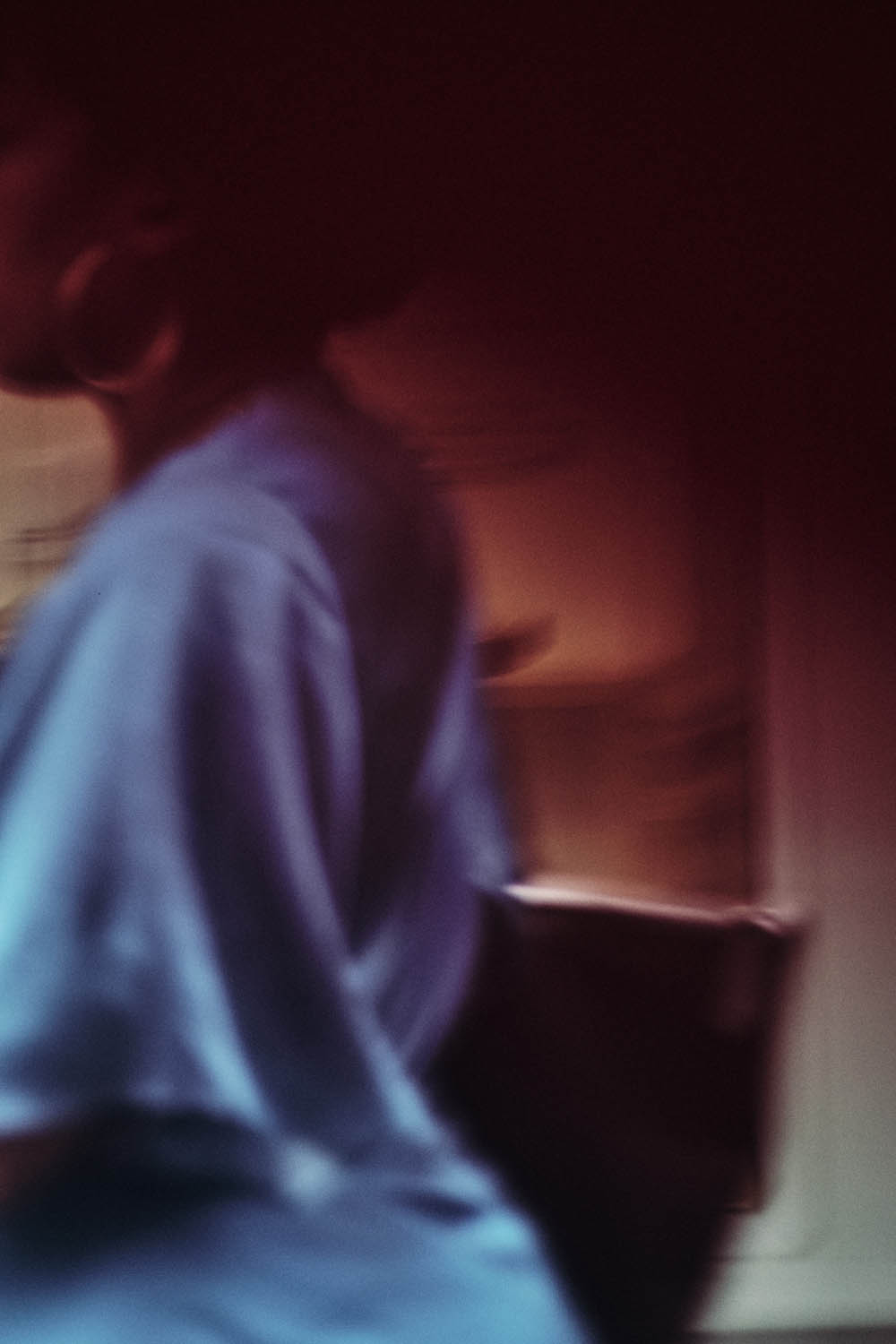
RIGHT: Fuji X-T2 . Canon FD 50mmF1.4 . 1/40″ . ISO 800
I quickly got the feeling that 50mm (75 equivalent then) was not enough. I had to go further, and I bought a Canon FD 85mm F1.8. Gear moment: I wanted to replace my long-gone 90mm F2, so this felt like an alternative that would be a nice addition to my bag. It obviously made it quite harder to focus, especially when using wider aperture. The hardest part I think, was to adapt my eye again. I am used to wider lenses, and each time my eye dived in the viewfinder, and I saw what the 85mm lens saw, it always took a few seconds for me to understand what I was really seeing through the lens. I don’t know if it’s true for zoom shooters as well, but I didn’t realize before that my eyes were trained to see in between the 35-50mm zone.
I also think that trying this during the summer felt a bit off. Saul Leiter’s photographs always seem to have a moodier vibe, with coats, and hats. This took me to the point where I had to wait for a grayer day to try it again with the 85mm. Even though it felt better, and less crowded as well, I still think it’ll be better in the winter – and I genuinely can’t wait.
In a more artistic way, I found it really hard to get the compositions right, and to manage to have enough chaos in the picture, yet with very few information. Sometimes, I think the secret actually lies here. Leiter’s work always has one, two, or maybe three people on it, but I pretty much never saw more, yet, the images feel a bit chaotic/moving. Most of the information seems to lie in the background or the foreground, as the infamous layers. This was really, really hard to get, and even using reflects and negative space, my images end up crowded, with too many people on them. Simplicity might actually be the key.
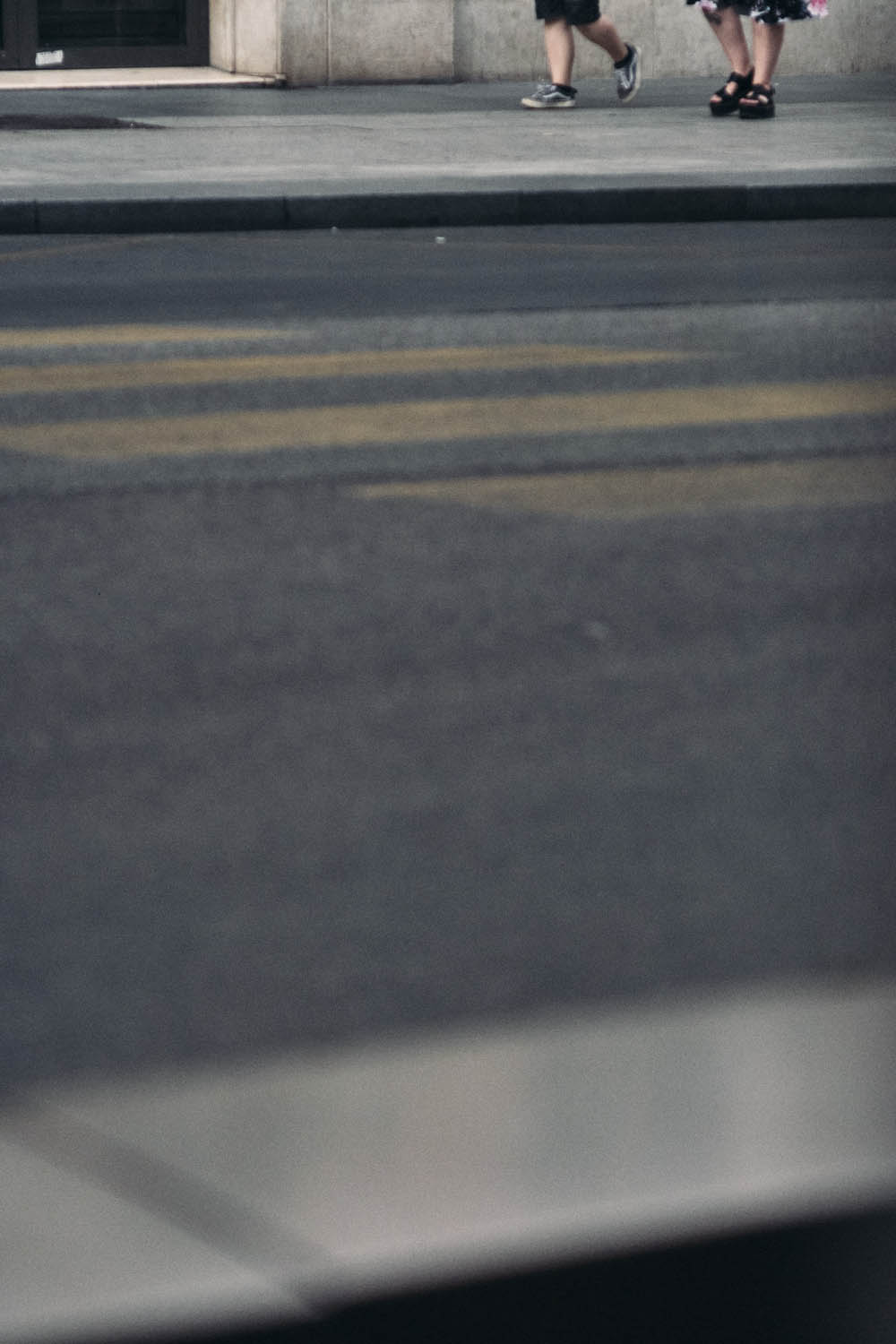

RIGHT: Fuji X-T2 . Canon FD 85mmF1.8 . 1/1600″ . ISO 1600
Doing this little personal project, even though it was only during two months, helped me a lot. It helped me with the intention in my pictures, it helped me think more about how I wanted my shot to look before I pressed the shutter. To me, it now seems to be a really master-ish skill, and I am glad that I could at least feel a glimpse of it. It was also a real challenge, to try to think, shoot, and edit differently, and I have the feeling that this was the first time I really went out of my comfort zone while still shooting street photography. I couldn’t encourage you more to try something similar, or at least try to do what you do – but differently.
How about now?
Now I don’t know what to do. I have the feeling that my own personal – usual pictures look a bit insipid. While it may sound a bit sad, I actually feel that it’s a good thing for my art, since it pushes me to be better. And to shoot better. My art hasn’t even reached Leiter’s level, and and I don’t think it will, but I am at peace with that, because I don’t think I did this to reach him, I just wanted to add a stone to my own work. Thank you for that, Saul!
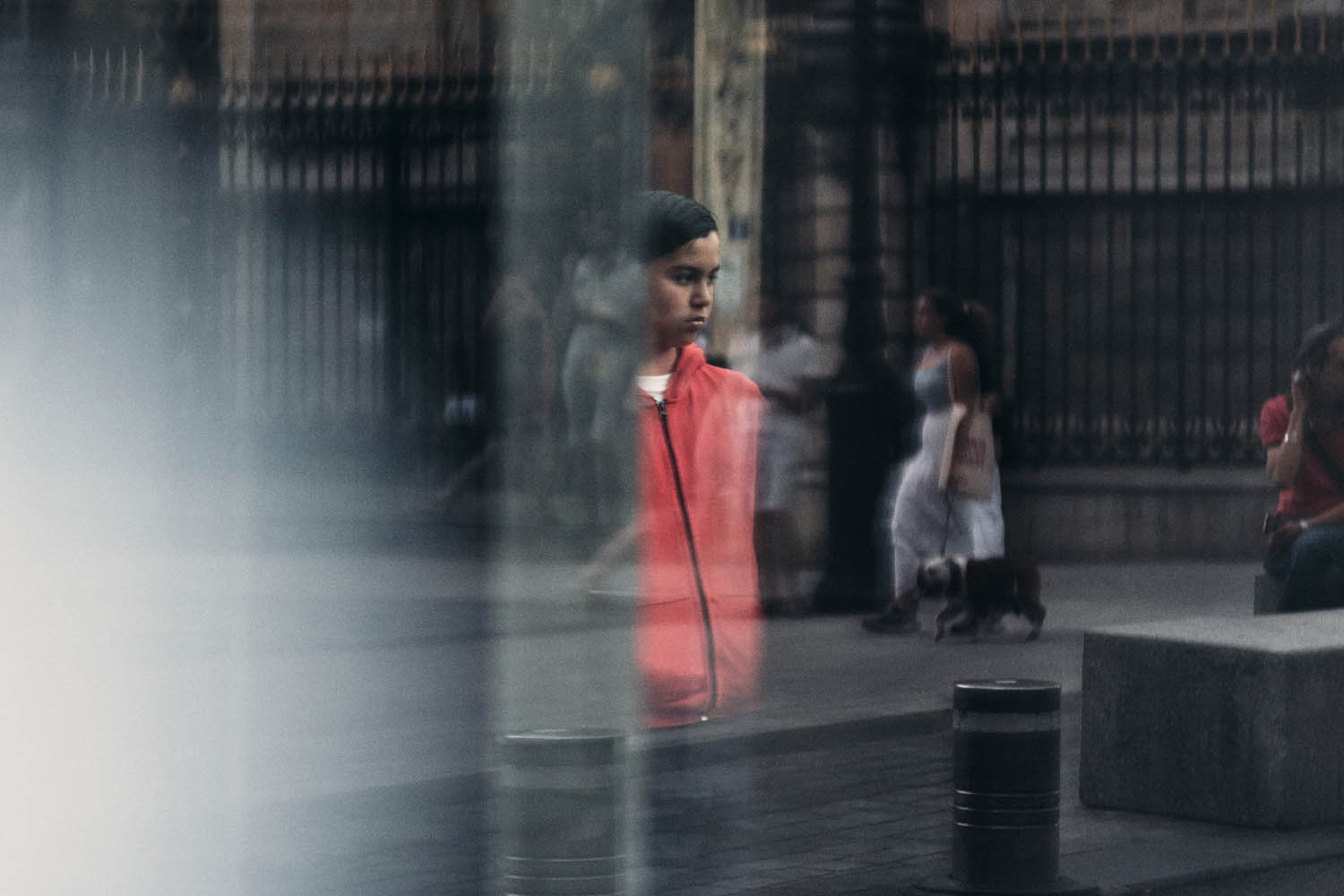

“My name is Guillaume, and I live in France. I’m the head manager of a big music school in Brittany, and I’ve always been into art. I’ve been a musician, a painter, a writer, and three years ago, I dived all the way into photography. It’s my main passion. Even though I get to cross the country quite often, I live in a quite boring area, and that’s my everyday challenge: trying to get the boring things worth your look. “



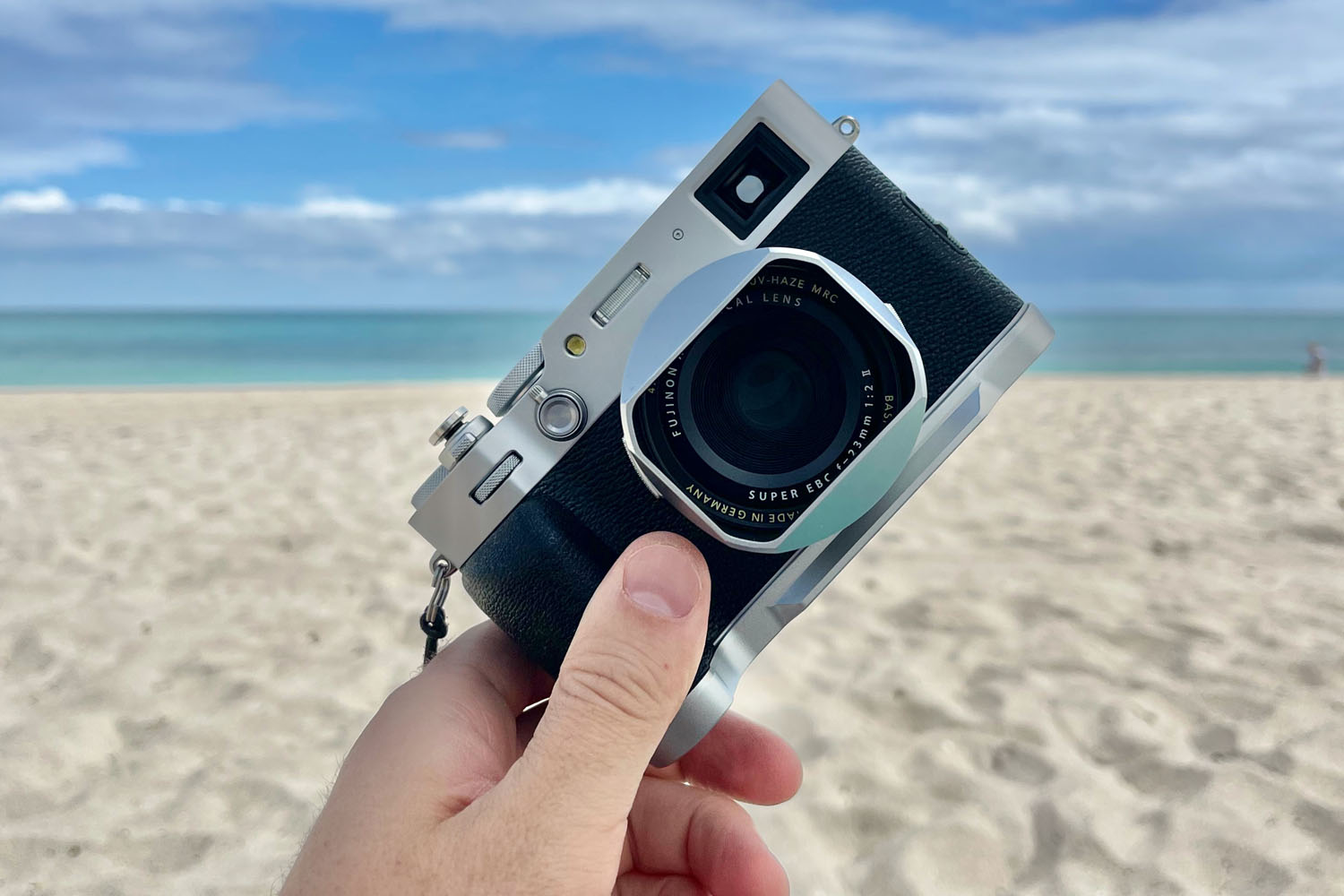

Florian
February 8, 2024 @ 8:34 am
Thank you, Guillaume.
I’m working on incorporating some of Saul Leiter’s stylistic choices and techniques in my own work. Your article really emphasized some important aspects. It also made me want to get an old, long lens 🙂 – Too bad shooting with focus peaking isn’t that much fun with the X-T5 since the outlines don’t go away when you half-press the shutter. I might get an X-T1 or 2 just for manual shooting purposes.
Guillaume
February 8, 2024 @ 8:48 am
Hey, and thanks!
I didn’t know the X-T5 still shows the outline when you half-press the shutter. In fact, I would have liked that ahaha, but I guess everyone has their preferences.
You could easily find a Canon FD lens, or a M42 longer lens like the Takumar 135mm, which is a very nice addition to a kit!
Normand
March 1, 2024 @ 11:37 am
Hi Guillaume
Thanks for the article.
I Currently have a X-T5, X-T2 and still have a Minolta X700 working very well with many lenses and an MD-FX adapter.
I’ll certainly try to find some good mixes (camera/lens) and maybe there the result sometimes
obert
November 23, 2024 @ 11:26 am
Hello Guillaume,
I really like the way you edited these images. I am learning so is there a way you could expand on that? You mention not using the film simulations from your other article anymore, but you still take Classic Chrome as your basis. What other parameters do you tweak to get the results you get?
Thank you for you time and beautiful photos,
obert
Guillaume Rabuel
November 23, 2024 @ 3:53 pm
Hello there Obert!
Thanks for your comment. And sure, I can tell you more!
My editing style has changed a lot over the years, and yes, when I’ve done this project I stopped using simulations, but I kept the Classic Chrome base. Either you shoot with it, or you can add it in post, whether it’s in Lightroom or Capture One. I shoot raw, and I use Capture One.
First I start by adjusting the exposure, bringing the overall up a bit, and then using a curve. I don’t know how to describe the shape of the curve, but I only bring up the midtones, and keep the shadows down, and highlights down as well. I reduce the contrast as well.
Then, I work on the colors, and it’s the most important part I’d say. I bring the general saturation down, and tweak each color individually. Yellows and red are fundamental. Yellows are saturated, and reds too, plus tend to go towards orange. I usually bring the luminance down too, to make them deeper.
I then use the color grading tool to add green/cyan to the shadows, and yellow/orange to the highlights.
I then end by lifting the shadows and the black point, to get a closer-to-film kind of shadows.
I then add clarity and structure, but just a tiny bit (it’s like +3 or 4), and grain.
I think that’s all!
Hanoch
March 12, 2025 @ 6:54 am
Hi Florian;
There is a way,
See “How to Fix Fujifilm Focus Peaking “Annoyance”” by PAL2TECH